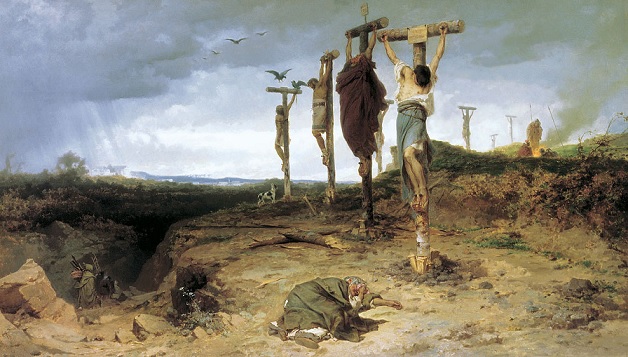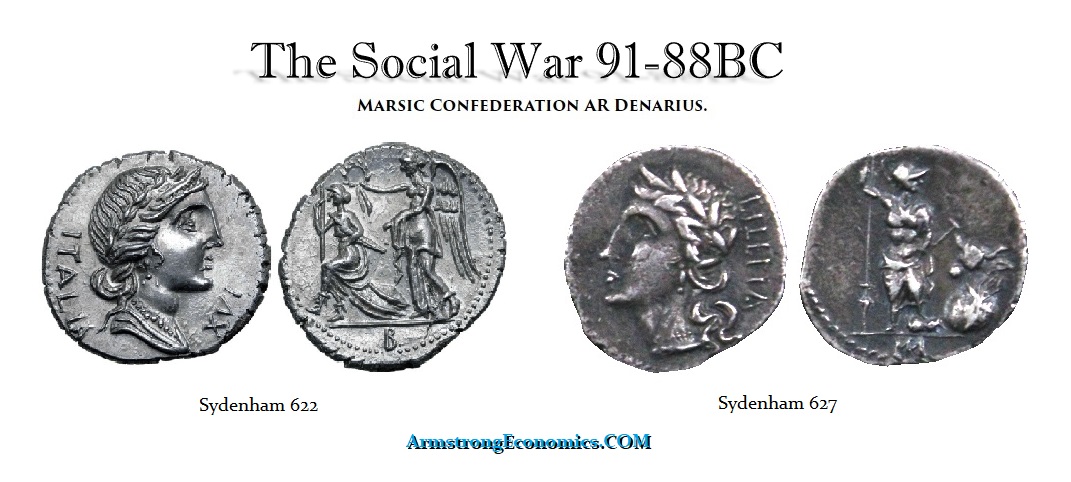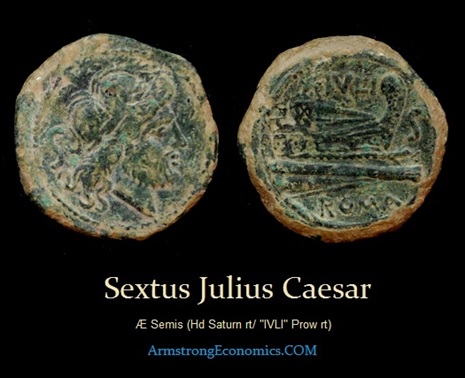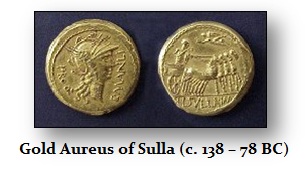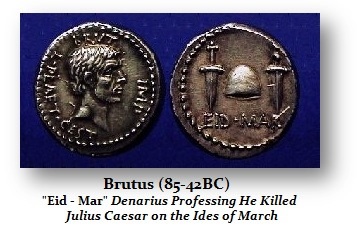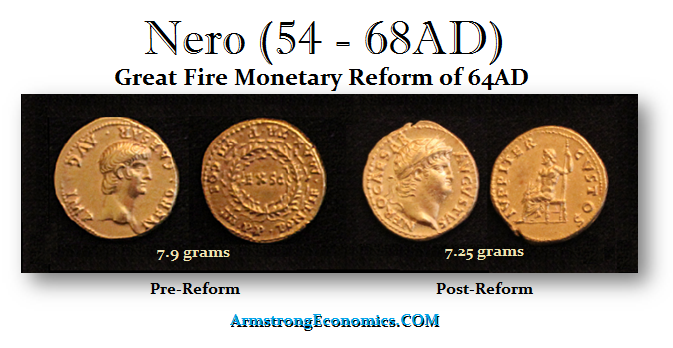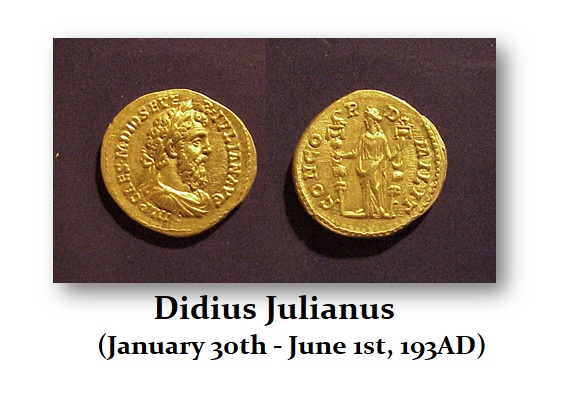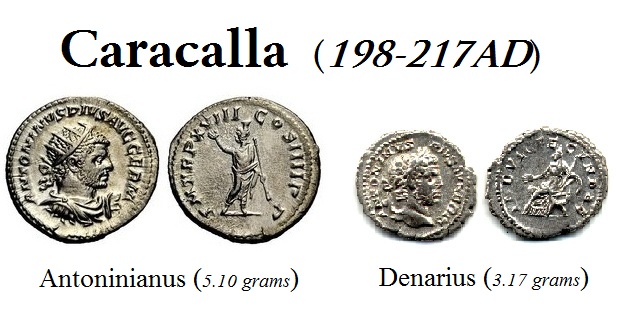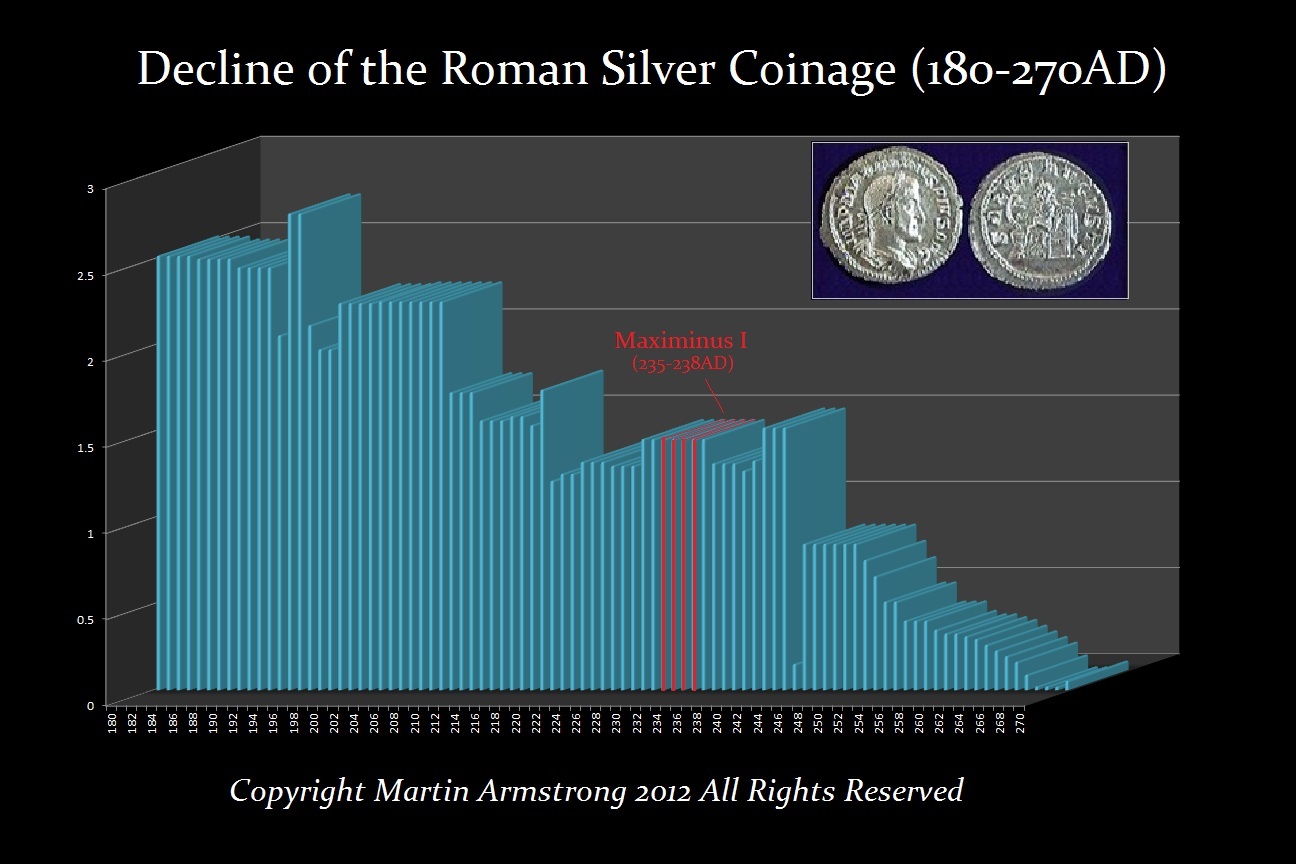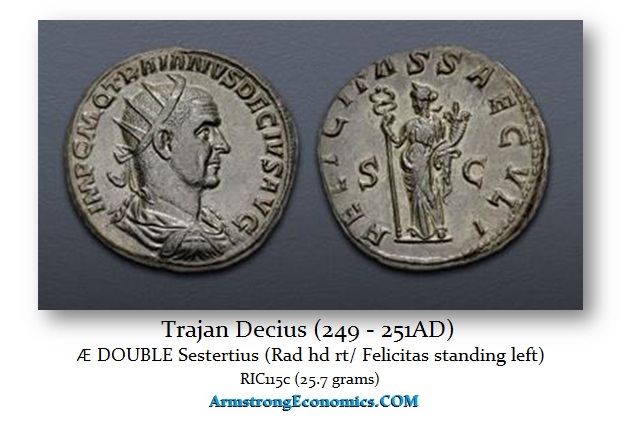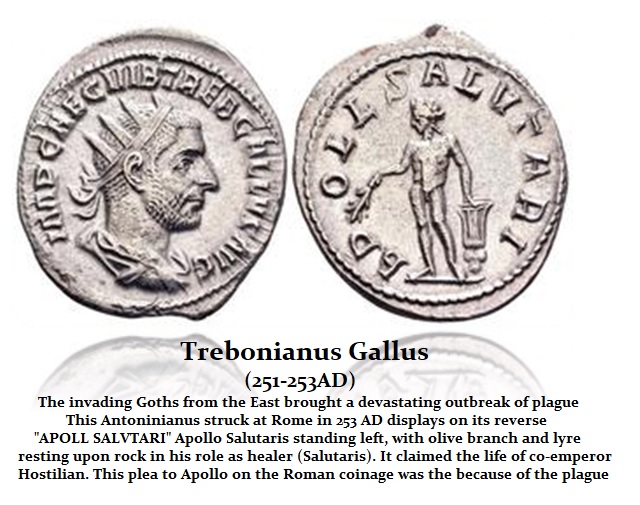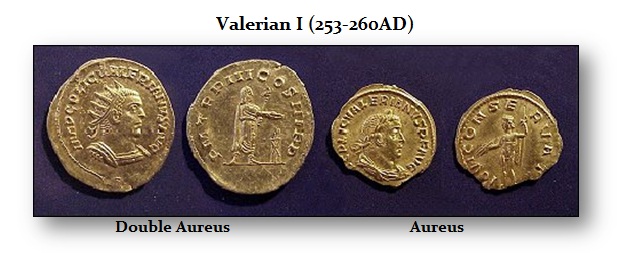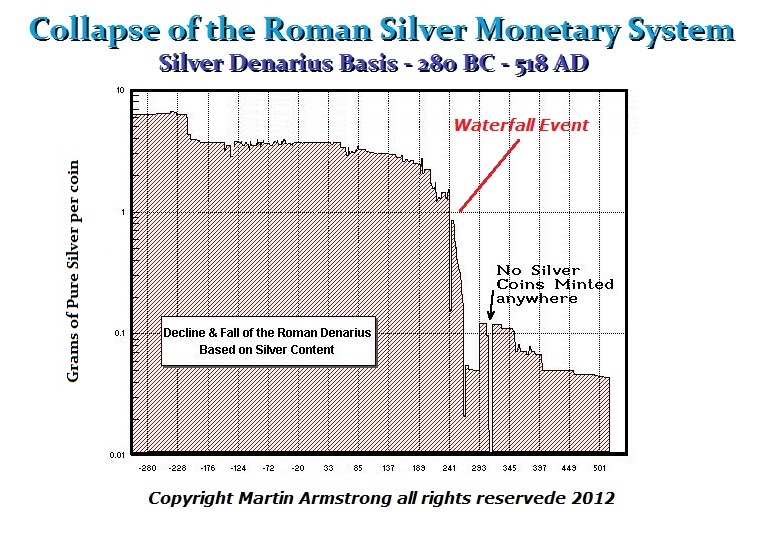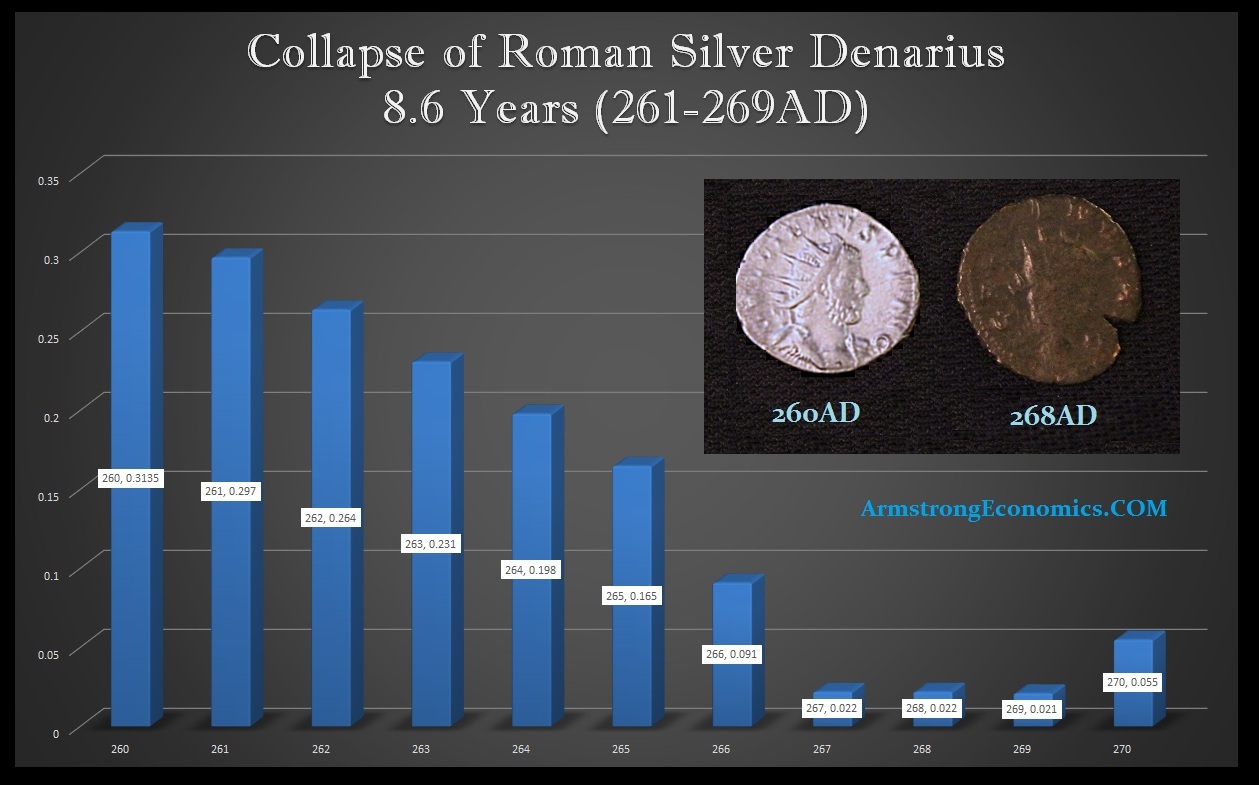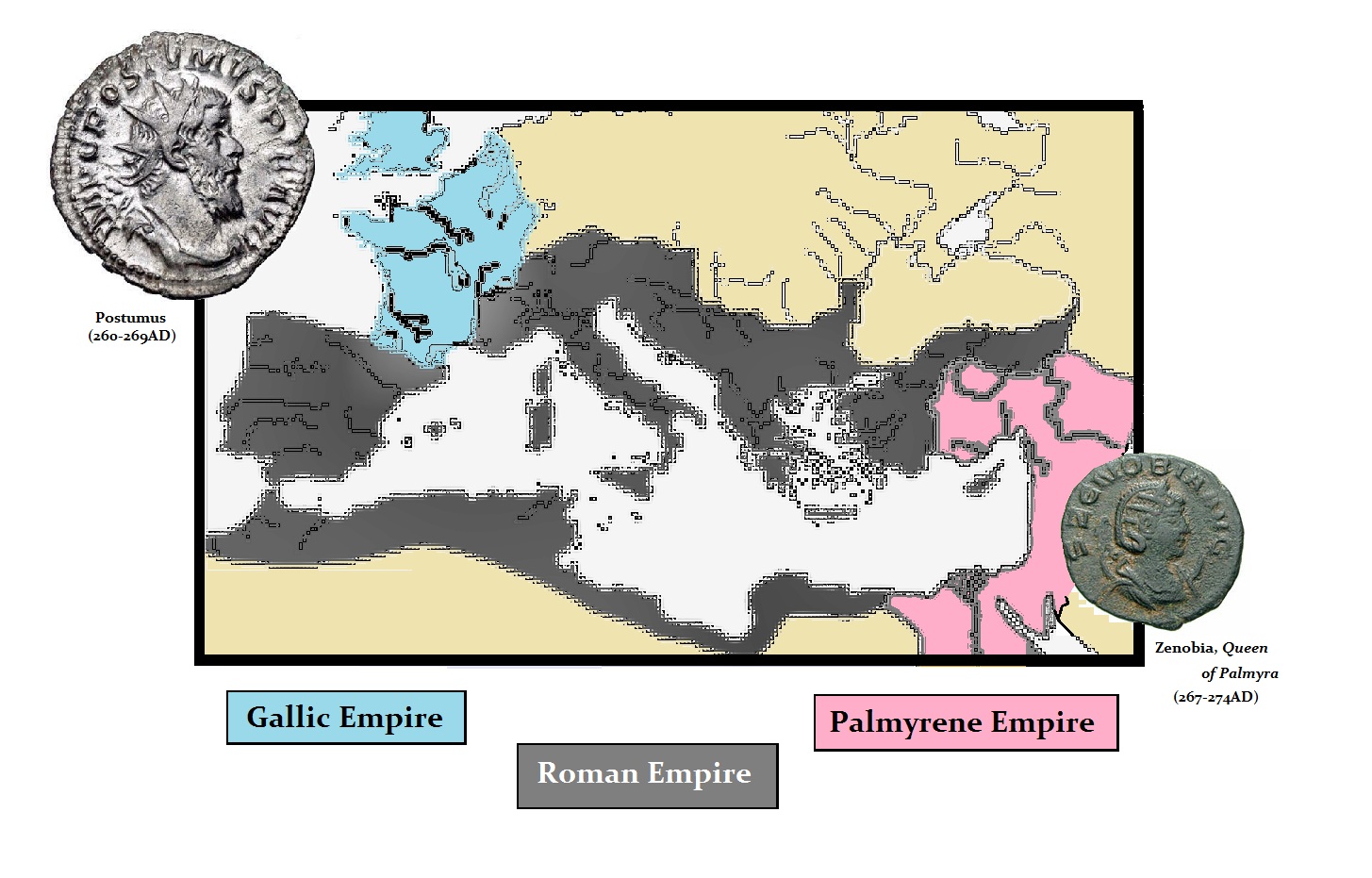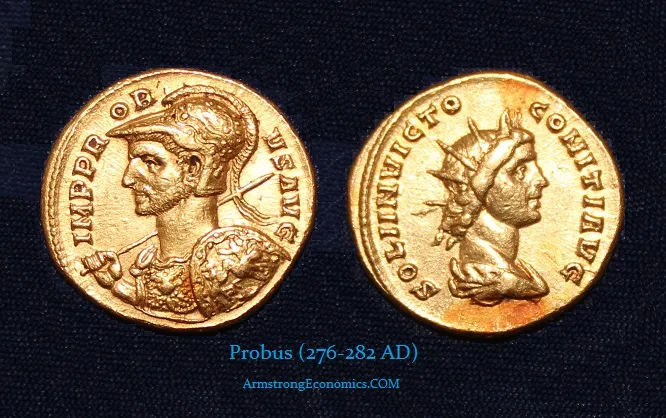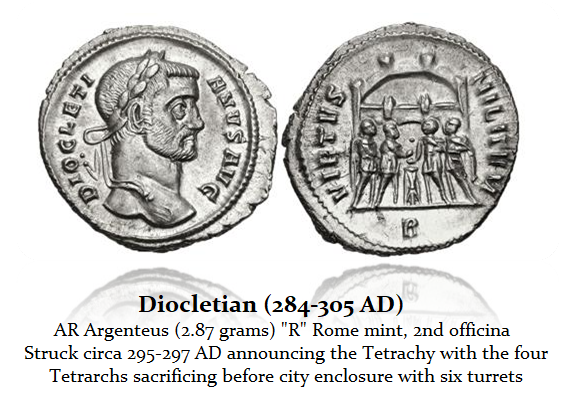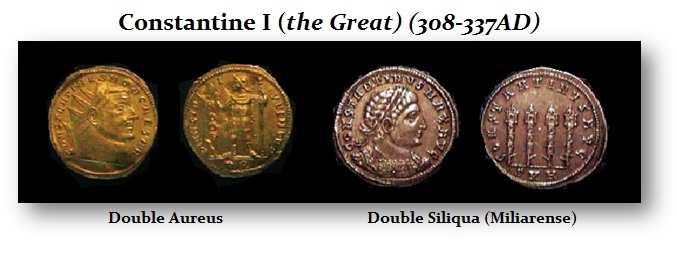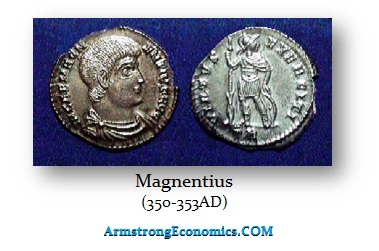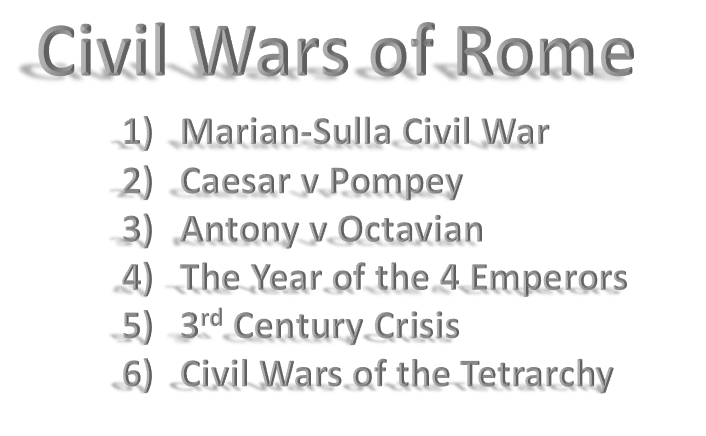Spartacus Rebellion 73-71 BC
QUESTION: Marty, nobody has done such intense research geopolitically than you. This theory of a one-world government seems absurd with so many languages and cultures. Looking at Ukraine, Kyiv is demanding the people in the Donbas speak only Ukrainian and they must surrender their religion to the Patriarch in Kyiv. This is at least a parallel to the French seizing the Vatican and moving it to Avignon. I believe you have said that was the exact opposite of how Rome built an empire.
So, my question is straightforward. While Rome may have lasted for a thousand years, there were civil wars and uprisings like the Spartacus Rebellion. Can you elaborate on the cycle of civil wars in Rome? Is this our fate?
PL
ANSWER: This arrogance that a one-world government will end war is absurd. The Roman Empire was one government and it had numerous rebellions and civil wars. So much for this their intent to make the UN and the WHO rule the world. Nobody ever seems to refer to history and just ask – has this been tried before? What was the outcome?
The Social War, also called Italic War, or Marsic War, (91–88 BC) was a revolt of Rome’s Italian allies (socii, hence ‘Social War’). This was the first real civil war following the birth of the Republic in 509 BC. The allies in central and southern Italy had fought side by side with Rome in several wars. But the Romans looked down on them as aliens and denied them equal rights. They rose up against this autocratic rule and demanded Roman citizenship and the privileges it conferred. Then in 91BC, the Roman tribune Marcus Livius Drusus tried to solve the problem by proposing legislation that would have admitted all Italians to Roman citizenship. The response was to assassinate him. This resulted in the once-Italian allies rising up in revolt.
The Peloponnesian War was effectively the city-states that were once the allies of Athens rose up and joined Sparta against Athens also for their arrogance. I believe you will see the same unfold with Europe starting to split from the United States and turn against it also because of the arrogance of our Neocons. Remember Victoria Nulan’s comment ” F the EU!”
During this Italian Social War against Rome, we find the Coinage of the Marsic Confederation (90-88 BC) (90 when they began producing coins), which opposed Rome. They issued Denarii perhaps striking the coinage at a Bovianum mint. We see the laureate female head of Italia wearing a single drop earring and pearl necklace; viteliú (in Oscan) in both a left and right configuration. These coins were clearly a political statement that it was Italia against the tyranny of Rome. These coins are known as the Marsi Confederation named after the Marsi who were especially prominent in this movement.
The main fighting was in the years 90-89 BC and the rebellion assumed alarming proportions when both consuls (generals) for 90 BC were defeated by rebel armies. Rome appeared to be in serious danger of defeat, but the movement collapsed as suddenly as it had begun. The victory was probably achieved largely through the political concession of granting Roman citizenship to the enemy. Thereafter, all of Italy south of the Po was united by this common bond. The coinage of the Marsic Confederation is of great interest, consisting principally of silver denarii, some of which bear the names of the rebel generals.
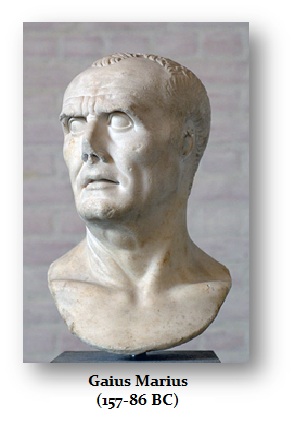 The first coin ever issued with the name of Julius Caesar was issued by Sextus Julius Caesar (c 209-208BC) and they are very rare. It was actually the consul Lucius Julius Caesar (134-87BC) who stepped in and helped pass a law granting Roman citizenship to all Italians who had not participated in the revolt and probably also to all who had but were ready to immediately lay down their arms.
The first coin ever issued with the name of Julius Caesar was issued by Sextus Julius Caesar (c 209-208BC) and they are very rare. It was actually the consul Lucius Julius Caesar (134-87BC) who stepped in and helped pass a law granting Roman citizenship to all Italians who had not participated in the revolt and probably also to all who had but were ready to immediately lay down their arms.
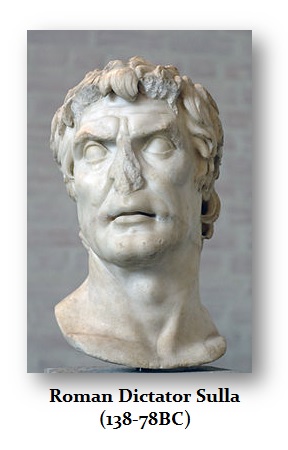 Despite championing the rights of Italians, Lucius and his brother Gaius Julius Caesar Stabo Vopiscus were murdered by Gaius Marius (c. 157-86 BC) sought to increase his prestige with marriage into an old, but impoverished patrician family, the Julii Caesares. He married Julia, aunt of Gaius Julius Caesar (100-44BC), around 110BC since his son was born in 109/108BC.
Despite championing the rights of Italians, Lucius and his brother Gaius Julius Caesar Stabo Vopiscus were murdered by Gaius Marius (c. 157-86 BC) sought to increase his prestige with marriage into an old, but impoverished patrician family, the Julii Caesares. He married Julia, aunt of Gaius Julius Caesar (100-44BC), around 110BC since his son was born in 109/108BC.
Marius was actually acclaimed for saving Rome from the brink of collapse at the Battle of Vercellae, fought on July 30th, 101 BC in Northern Italy when a Germanic-Celtic confederation invaded. Yet his conflict with Sulla the Dictator (138-78BC) has overshadowed his significance in Roman history. It was Sulla who forced Julius Caesar (100-44BC) to flee. It was Sulla who said he saw another Marius in Caesar – a man of the people.
When the Social War began in 91 BC with the uprising of the Republic’s Italian allies against Rome, the Senate turned to Marius being an accomplished military general to lead Rome’s troops against the Italians. Marius at first complied and competently commanded legions throughout the first year of the war in 90 BC. However, he retired perhaps being forced out of power by his senatorial enemies as he clearly disagreed with fighting against the rest of Italy.
As the Social War was nearing an end, the King in the East, Mithridates of Pontus, rose up against Rome. Marius wanted the command. This really revealed that it was Marius’ disagreement with the Senate to wage war on their Italian Allies. Yet, Sulla was ultimately given the Mithridatic command. Marius plotted with the tribune, Sulpicius, to introduce a motion to transfer the Mithridatic command to Marius, which he did. It passed, but instead of obeying the Senate, Sulla treacherously turned his troops on Rome itself in 88 BC and marched with it on Rome. Sulpicius’ measures were rescinded, and Marius was exiled.
In 87, Lucius Cornelius Cinna (130-84BC) became consul. When he tried to register the new citizens (acquired at the end of the Social War) in all 35 tribes, rioting broke out. Cinna was driven from the city. He went to Campania where he took over Sulla’s legion. He led his troops toward Rome, recruiting more along the way. Meanwhile, Marius gained military control of Africa. Marius and his army landed in Etruria (north of Rome), raised more troops from among his veterans, and went on to capture Ostia. Cinna joined forces with Marius; together they marched on Rome.
Cinna revoked Sulla’s law against Marius and the other exiles when he took the city. Marius then took revenge executing his enemies which included fourteen prominent senators. Cinna and Marius were both re-elected consuls for 86 BC, but a few days after taking office, Marius died.
After briefly attempting to repel Sulla’s invading legionaries, Marius was forced to withdraw. Sulla then seized control of the Republic becoming a true dictator.
Spartacus Rebellion was during the Republic 73-71BC, 15 years after the Social War. Julius Caesar crossed the Rubicon on January 10th, 49 BC which came 22 years after the Spartacus Rebellion. The next Civil War came following the assassination of Caesar in 44 BC. That lasted for about 4.3 years. In the process, Brutus (85-42BC) was killed.
Then we have a civil war instigated by Cleopatra using Mark Antony. That culminated in the Battle of Actium and then Augustus (27BC-14AD) invaded Eqypte and both were dead in 30BC. That concluded 14 years following the death of Caesar.
The last of the Julio-Claudian line of emperors who followed Augustus (27-14AD), was Nero (54-68AD). Nero dies June 9th, 68AD, and that unleashed the next civil war which lasted about 2.15 years.
This brings us to the assassination of Commodus (177-192AD) in 192AD which set off another Civil War after the Praetorian Guard, the Deep State, actually auctioned off the crown to the highest bidder – Didius Julianus (Jan 30th-June 1st, 193AD). That created such outrage it cause many generals to march on Rome. Septimus Severus (193-211AD) emerged as the victor.
The son of Septimus Severus was Caracalla (198-217AD) who killed his own brother Geta so he would not share the throne and was assassinated. That set off another civil war which lasted again for at best 2.15 years. The women of the family were very dominant and they managed to seize power and keep family members on the throne until 235AD and the murder of Severus Alexander (222-235AD).
This is where the monetary system really begins its Waterfall Event when Maximinus I (235-228AD) comes to power. He enlists spies to target people with wealth. Executes them and seizes all their assets. Many historians claimed he was a barbarian who pretended to be Roman to destroy the empire. He effectively was doing what Karl Marx advocated centuries ago.
The Senate tried to seize back power by appointing Gordian I and his son Gordian II (238AD) to defend Rome. That became the year of 6 emperors. The troops demand Gordian III (238-244AD) to take the throne and the Senate had no choice.
Philip I (244-249AD) overthrow Gordian III and is known as Philip the Arab. This sets in motion a number of usurpers in 244AD including Silbannacus and again usurpers appear in 248AD – Pacatian and Jotapian.
Yet it is Trajan Decius (249-251AD) who emerges as the victor. He was the first emperor to be killed in battle with the barbarians. This sent shockwaves through the empire causing many to begin to realize that perhaps they were not invincible.
He has one young son who survived, Hostilian, who was taken in by the next emperor – Trebonianus Gallus (251-253AD), who tried to buy peace with the Goths. They took the money and violated the agreement. Aemilianus (253AD) defeated some Goths and then marched on Rome. The Goths also brought with them the Plague. This resulted in Gallus and his son Volusian being murdered by their own troops.
Aemilianus was challenged by Valerian I (253-260AD) and rather than do battle, they decided to kill Aemilianus. Valerian raises his son Gallienus (253-268AD) to be his co-emperor.
It was Valerian who was captured and turned into a royal slave by the Persians. This was a tremendous humiliation for Romans. The monetary system simply collapsed. People began hoarding their currency on a grand scale. This created a shortage of silver which then resulted in the debasement of the coinage in just 8.6 years.
This collapse in the monetary system brought with it political instability. Once Valerian was captured in 260AD, this is when the Roman Empire splits into three – the Gallic Empire in Europe was the result of Postumus (260-268AD) and Zenobia (271-272AD) takes Asia.
There were a few other generals who declared themselves upon the capture of Valerian – Macrianus (260-261AD), Quietus (260-261AD), and Regalianus (260-261AD). Interestingly, Gallienus is assassinated in 268AD and so is Postumus in the Gallic Empire. In Rome, Claudius II (268-270AD) comes to the throne but he dies of the plague which was brought in by the invading barbarians.
Aurelian (270-275AD) come to power and sends an army against the Deep State which was controlling the mint and keeping all the silver for themselves. He also builds the defensive wall around Rome since the barbarian invasions make it into Italy itself. He was assassinated by his own officers on rumors that he would accuse them of corruption. The troops rebelled against the assassins and asked the Senate to appoint a new emperor. They installed Tacitus (275-276AD) who was 75 years old. He died on the campaign of old age.
Upon the death of Tacitus, his half-brother Florianus (276AD) claimed the throne. He face another general who claimed the throne Probus (276-282AD). The troops killed Florianus to avoid battle. Probus was in turn murdered by his own troops for having to build public works.
This led to Carus (282-283AD) being proclaimed emperor by the troops. He was struck by lightning and killed by the gods. He was succeeded by his son Numerian (283-284) who was murdered by his troops. There was a usurper named Julian of Pannonia (284-285AD) which was in the region of Yugoslavia, He was defeated by Carus’ other son Carinus (283-285AD). He was then killed by his own troops which seemed to becoming a common practice.
Now the empire fell into the hands of Diocletian (284-305AD) the Great Reformer who even reintroduced silver coinage. He established the Tetrarchy to try to end the chaos of usurpers. Diocletian also introduced wage and price controls attempting to bring inflation under control.
That lasted until Constantine (308-337AD) used Christianity to justify that if there was one God, then there should be just one Emperor. He created his own dynasty after defeating Maxentius in 312AD. The Constantine Dynasty lasted for 51.6 years.
The true fall of the Constantine Dynasty came in 350AD with the rise of Flavius Magnus Magnentius (350-353AD) who many considered was of barbarian descent. The last technical emperor related to the Constantine family was the Pagan Julian II (360-363AD).
While many simply list Six major Civil Wars, this really is just a gloss-over concerning the true depth of history. What we truly discover for this entire period between the Social War up until the fall of the Constantine Dynasty in 350AD. Thus, from 90 BC to 350AD, divided by 8.6 reveals an average of 51.16 years.

